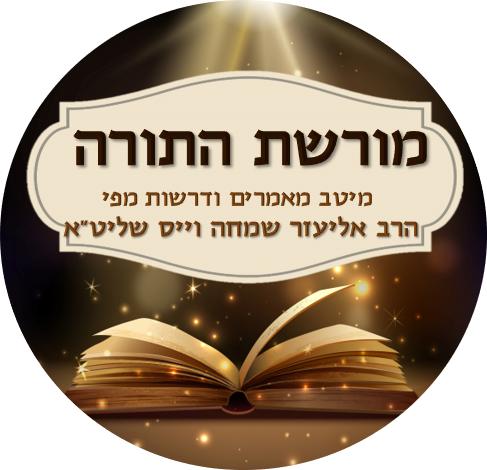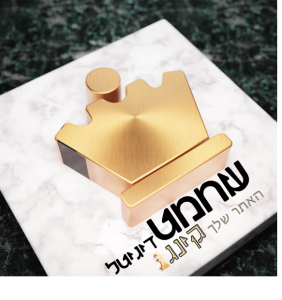Tezaveh-Tzitz Geulah and Megilat Esther
The Mishna in Avot (6:6) says that “anyone who repeats a saying in the name of the one who said it brings- Geulah- redemption to the world”. When we quote a person we ensure the continuation of tradition.
A discussion in the Talmud about the tzitz, the headplate that the Kohen Gadol wore while serving in the Temple (Beit Hamikdash), and on which the words Kodesh la’Hashem ( Holy to G-d) were inscribed, highlights the importance of tradition. According to a Braita (Shabbat 63):
1. The Tzitz was a golden plate the width of two fingers which was a band crossing the forehead from ear to ear.
2. ‘Kodesh la’Hashem’ was written on it in two lines – ‘Hashem’ was written on top [on the left], ‘Kodesh’ and the letter ‘Lamed’ were written on bottom [on the right. R. Tam, cited by Rishonim – ‘Kodesh’ and ‘Lamed’ were on top [on the left], ‘Hashem’ was on bottom, on the right].
3. R. Eliezer b’Rebbi Yosi said that he saw the headband in the treasure-house of Rome – ‘Kodesh la’Hashem’ was written in one line. (Rambam – Chachamim agree that it is Kosher in one line; Me’iri – Chachamim did not accept R. Eliezer’s testimony as eyewitness testimony does not negate the Sages’ tradition, even though some of the greatest of the Sages testified, “I saw it in Rome and ‘Kodesh La Hashem’ was written on it on one line,” [still, an eyewitness] does not disprove that which was known to them”.(Beit Habechirah L’Rabbeinu HaMeiri, Tractate Shabbos 63b).
This debate is remarkable because the Rabbis chose to disagree with Rav Elazar in spite of the clear-cut evidence that he presented. Rav Elazar when in Rome was given the opportunity to enter the Emperor’s storehouse (see Tractate Meeilla 17a-b). In the storehouse, Rav Elazar saw the tzitz, which had been looted by the Romans from the previous Beit Hamikdash, and saw that the words Kodesh la’Hashem were written on one line! How could the Rabbis disagree with such compelling evidence, and furthermore, how could the Rambam rule in accordance with the Rabbis over Rav Elazar?
One possible answer is based on the writings of Rav Eliyahu Dessler in Michtav Me’Eliyahu (vol. 4, pgs. 56-57). He notes that the authors of the Talmud were exceedingly meticulous when citing the original author of a Halacha, one example being Nedarim 8b, where Rav Shimon quotes a Halacha in the name of Rav Yitzchak who was quoting Rav Chiya Aricha who quoted Rav Zeira who quoted Rav Elazar who quoted Rav Chanina who quoted Rav Miyasha who quoted Rebbe Yehuda bar Ilay! The reason for such precision, Rabbi Dessler explains, is to emphasize the importance of mesorah (tradition), the Torah’s chain of Halachic tradition. Laws were passed from generation to generation, bestowing authority on them. Any law that lacks authenticity cannot be considered a law. Rabbi Dessler explains that even though we might know how things were done in previous generations, if we do not have a direct chain of teachers that pass the laws on to the students, that knowledge loses its status as part of the Oral Law. The Rabbis are subsequently forced to utilize the methods of textual analysis available to them in order to compose a “new law” in Torah Sh’bal Peh (Oral Law). The visual proof of Rav Elazar can only be secondary to the systematic methods contained in Torah Sh’bal Peh. The Rambam recognized that a break in the mesorah had occurred and, acknowledging that Rav Elazar indeed had found a tzitz inscribed in one line, he nevertheless decided that the tzitz’s words should preferably be written on two lines in accordance with majority rule, the view of the Rabbis. There may be many explanations for what Rav Elazar saw. It could well be that the tzitz he saw was mistakenly written. Indeed, it is interesting to note that the menorah described ob the Arch of Titus in Rome was not of the design used in the Beit Hamikdash
Our discussion about the tzitz clearly highlights the saying quote above (Mishna Avot 6:6). By conveying the Torah Sh’bal Peh in a clear and authentic way, we are able to ensure that all of our laws will remain a part of the oral code in future.
In addition, the story of the Jews redemption from Haman is also connected with this same saying. Mordechai, cousin of Queen Esther, overhears a plot to King Ahasuerus’ life. He warns Esther who in turn repeats it to the King in the name of Mordechai, and the would-be assassins Bigtan and Teresh are caught. The incident was then recorded in the King’s diary. Years later, just as Haman is about to approach the King during the night to obtain permission to hang his mortal enemy, Mordechai, Ahasuerus cannot fall sleep. He calls to have his royal chronicles read to him and the same incident – demonstrating Mordechai’s loyalty – was read to him. Ahasuerus realizes that Mordechai, not Haman, is the King’s true faithful servant. This becomes a crucial turning point in the Shushan saga, and the tide begins to turn against Haman and in favor of the Jews.
The Geulah came about because Esther originally conveyed the information of the plot against Ahasuerus’ life in the name of Mordechai and did not try to achieve the credit for herself. In a very indirect fashion there is a link between an idea in Parshat Tezaveh and Megillat Esther which are often read during the same week.

 שחמט דיגיטל
שחמט דיגיטל